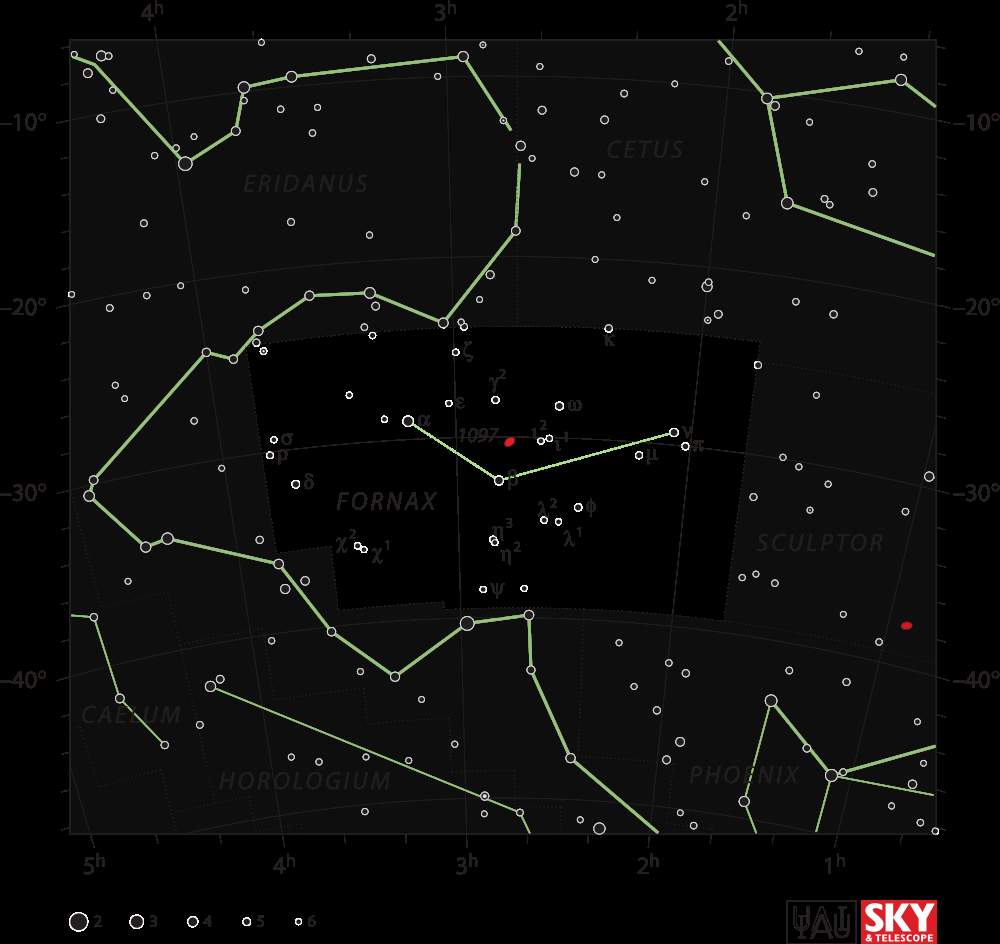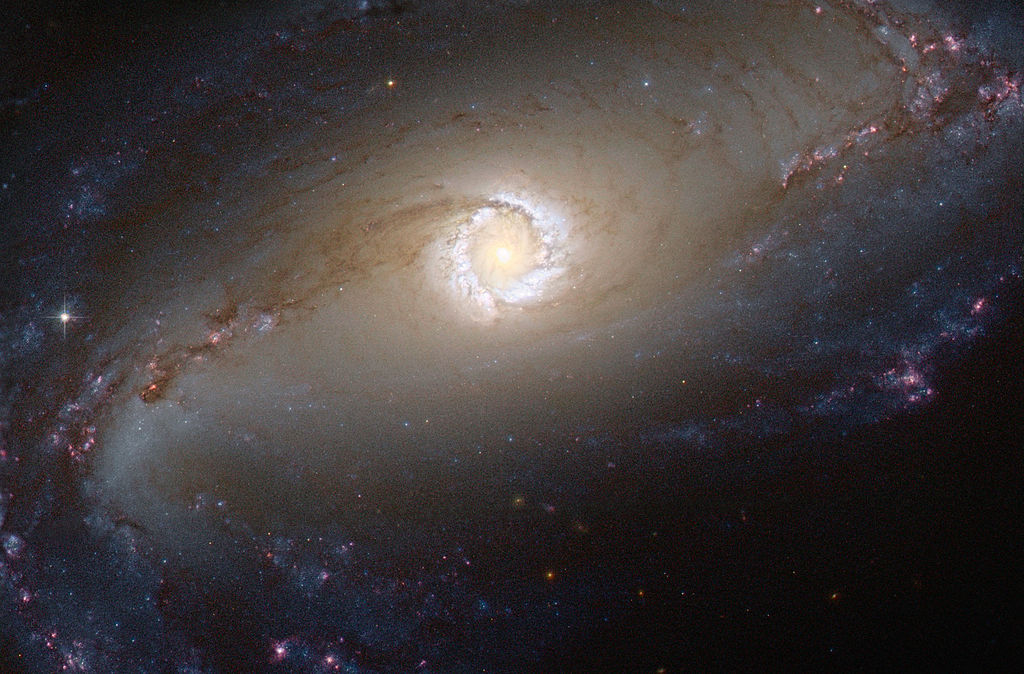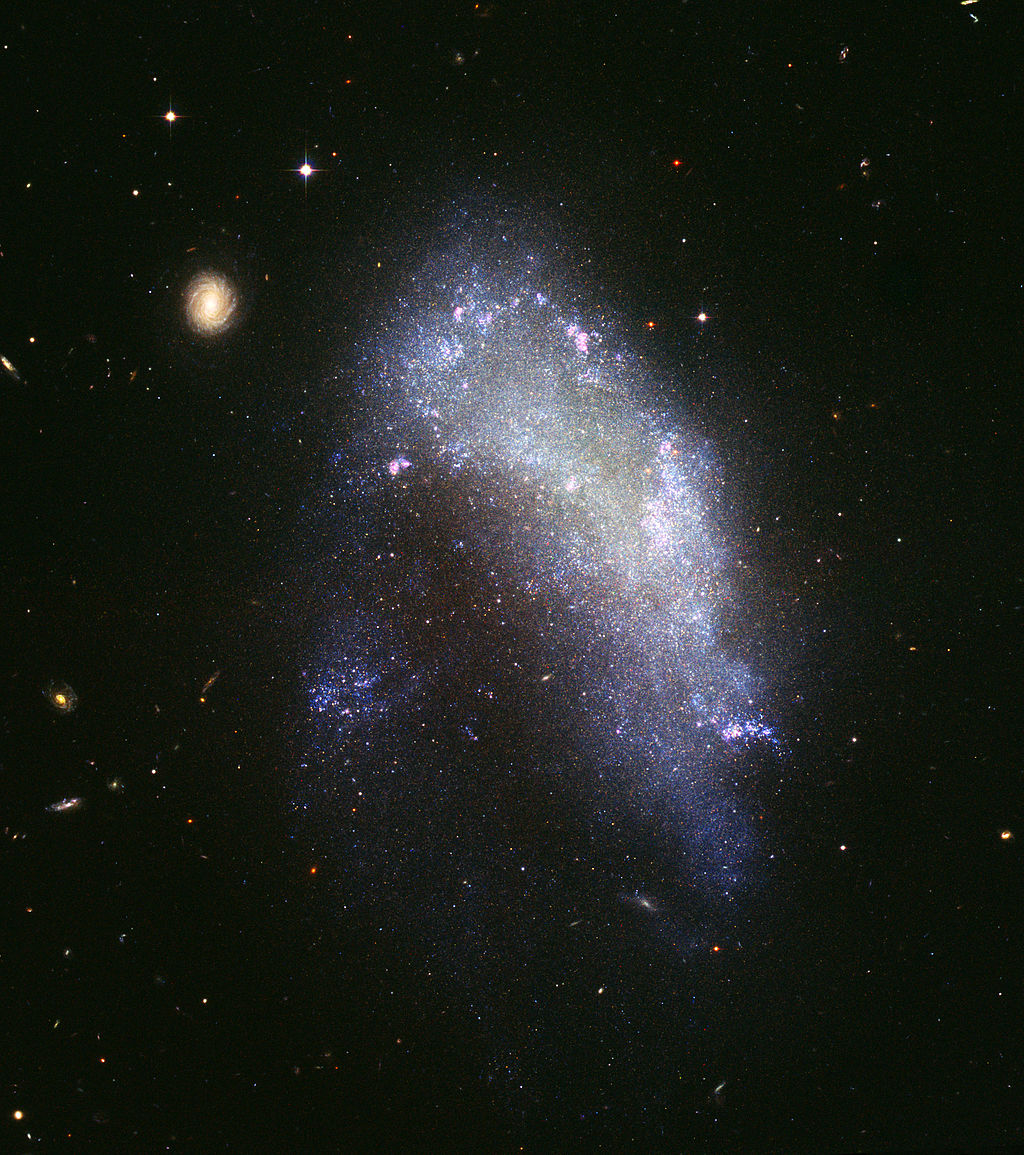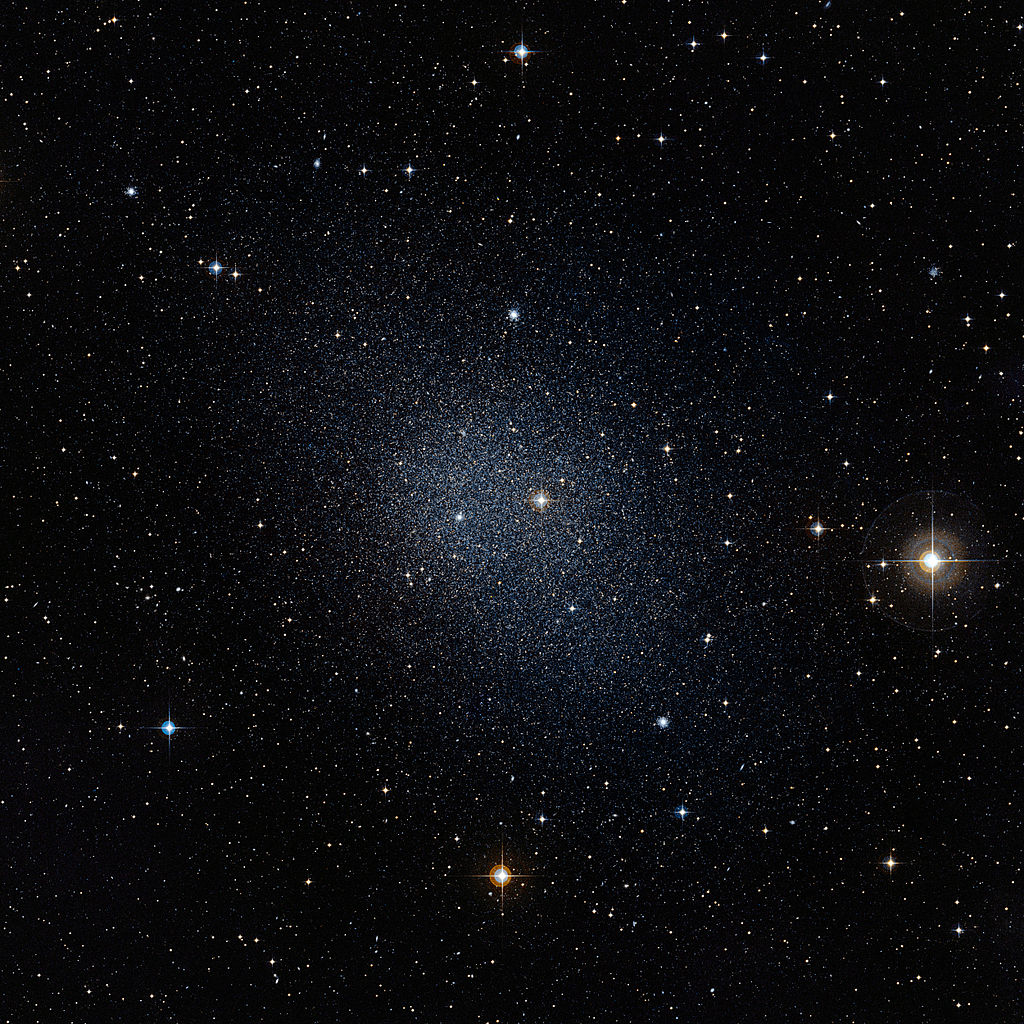
By IAU and Sky & Telescope magazine (Roger Sinnott & Rick Fienberg) [CC-BY-3.0], via Wikimedia Commons
"The Furnace"

By IAU and Sky & Telescope magazine (Roger Sinnott & Rick Fienberg) [CC-BY-3.0], via Wikimedia Commons
Abbreviation: For
Genitive: Fornacis
Constellation family: Lacaille
Nearest constellations: Cetus, Eridanus, Phoenix, and
Sculptor
Right ascension: 2.78h
Declination: -31.63°
Visible between latitudes: +50° and -90°
Square degrees: 398
Luminary: Alpha Fornacis
Notable deep sky objects: NGC 1097, NGC 1316, NGC 1360, NGC 1365, NGC 1398, NGC 1427
Fornax is located in the Southern Hemisphere and is best seen in December.
The Fornax Cluster, a cluster of galaxies in this constellation, is the second-closest galaxy cluster to Earth and is one of the largest radio sources in the sky. The cause of the radio signals is a supermassive black hole at the center of galaxy NGC 1316.
Fornax is also the location of the Hubble Ultra Deep Field. The HUDF is a small region of space that the Hubble Telescope focused on for an extended period of time due to the lack of galaxies in the near field in that part of the sky. A combination of data from 2003 to 2014 (a total of 814 orbits of viewing time by the telescope) resulted in an image containing around 10,000 galaxies.
Fornax was originally named and created by Nicolas Louis de Lacaille in the mid-1700s.
There is no mythology associated with this constellation.
Hubble Ultra Deep Field:

By NASA, ESA, H. Teplitz and M. Rafelski (IPAC/Caltech), A. Koekemoer (STScI), R. Windhorst (Arizona State University), and Z. Levay (STScI) [Public domain], via Wikimedia Commons
NGC 1097 (barred spiral galaxy):

By ESA/Hubble & NASA, acknowledgement: E. Sturdivant [CC-BY-3.0], via Wikimedia Commons
NGC 1427a (irregular galaxy):

By NASA, ESA, and The Hubble Heritage Team (STScI/AURA) [Public domain], via Wikimedia Commons
NGC 1316 (elliptical galaxy):

By NASA, ESA, and The Hubble Heritage Team (STScI/AURA) [Public domain], via Wikimedia Commons
Fornax Dwarf Galaxy:
